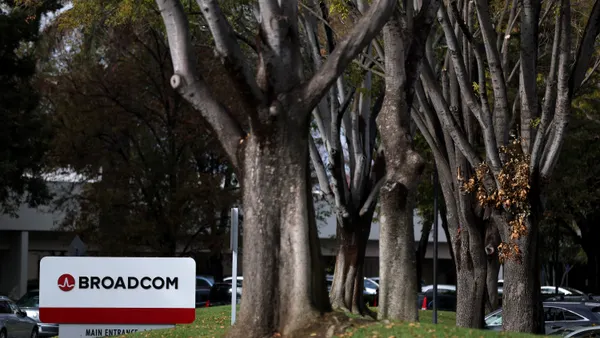With the race to the public cloud, private clouds at first glance appear left behind.
Eighty-four percent of enterprises have a multicloud strategy, according to Flexera's Rightscale 2019 State of the Cloud Report. Within that 84%, 9% of respondents use multiple private clouds; 17% use multiple public clouds; and 58% use hybrid cloud.
Only 3% of enterprises use a single private cloud.
"We're seeing the number of workloads move over to the public cloud, so that certainly is creating pressure on the whole world of private clouds," Kim Weins, VP of cloud strategy at Flexera, told CIO Dive in an interview.
But private clouds aren't disappearing. Instead, they're evolving to fit into a hybrid and multicloud world, whether for sensitive and secure data while other functions are spun up into a private cloud, or digital-first companies using private clouds to help house and analyze massive amounts of data.
Here's how private clouds are changing to stay in the game.
The changing role and structure of private clouds
A true private cloud is one that is not only used on site, but one that an enterprise builds and maintains.
That takes a lot of work and resources to keep running, said Weins, which is why it's not a popular choice.
But private clouds are still preferred by enterprises with strict security requirements and/or in highly regulated industries.
Private clouds "tend to be a little more constraining, but there's an exclusivity of it. They get to custom design the management of the architecture, and they tend to have control on how much computing resources they put at it," Keith Renison, senior product marketing manager at SAS, told CIO Dive in an interview. That can also lead to better performance.
Some enterprises that say they use private cloud aren't really running true private clouds either, Scott Sinclair, senior analyst at the Enterprise Strategy Group (ESG), told CIO Dive in an interview.
"Many organizations view themselves as having some sort of private cloud" even if they're leveraging software like VMware, which provides cloud computing services, he said. "It's being equated with private cloud."
Whether enterprises are building a private cloud from the ground up, or using software to maintain the cloud on premises, almost no one exclusively uses private cloud.
When clients want to scale, they are more likely to push non-secure jobs into the public cloud, Reinson said. "There tends to be an evolution from on-premises, moving into private cloud where appropriate and then there's been a massive adoption of public cloud."
Private clouds are also still used by companies that "are a little bit behind the curve and haven't quite embraced public cloud," Weins added.
Public cloud's evolving too
While public cloud has been the cloud of choice for young companies, Sinclair said they're moving to hybrid setups too.
ESG has seen "a lot of movement from the public cloud providers trying to bring that cloud experience down," he said. It challenges the idea that private is going to go away.
Public clouds are getting in on the private cloud market too. "We've also seen public cloud providers trying to offer private cloud options," Weins said, with strongest interest in Azure Stack and AWS Outpost, though adoption is "still fairly early."
Private has also been a resource for companies young, digital companies "that believe data is their business," Sinclair said. "They consider themselves cloud first. New workloads come their way and they think about cloud."
With massive amounts of data — and quick growth — these companies are expanding in private and public clouds.
"We're seeing companies that say 'my data is growing more than 50% year-over-year,'" he said. "That fuels the hybrid demand, at least for the near term."













